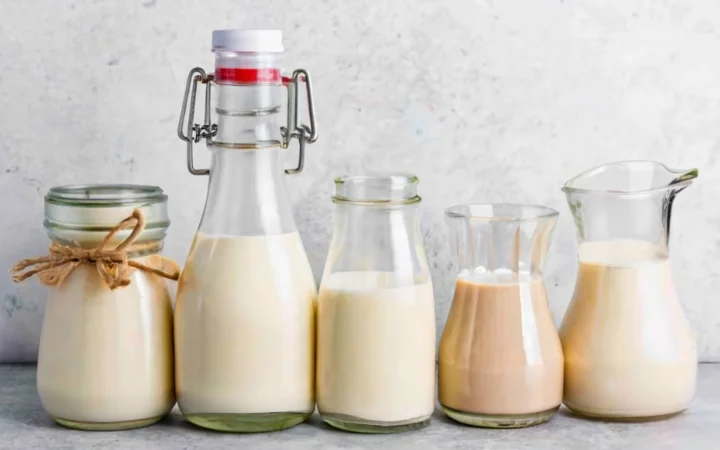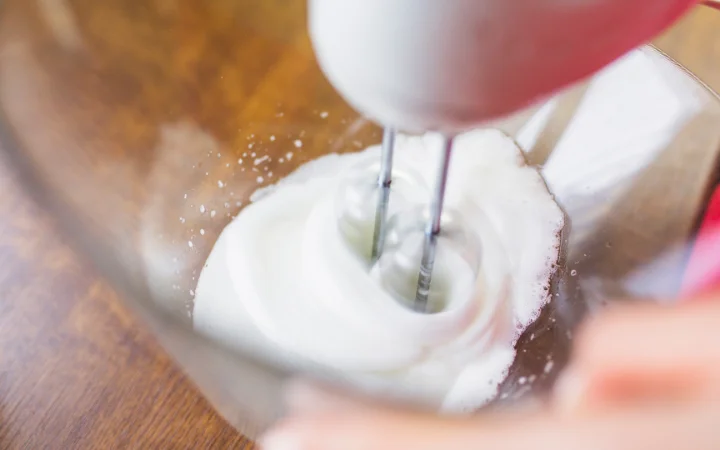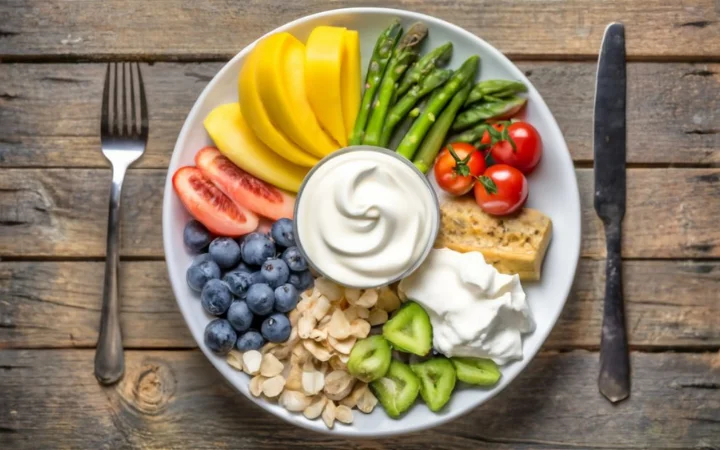Whipping cream, a culinary delight that has graced our desserts and beverages for centuries, is much more than just a topping. It’s a versatile ingredient that can transform the simplest of dishes into something extraordinary. From its rich history to the various types available, and from the top brands to homemade recipes, this article delves into the world of whipping cream. We’ll explore its nutritional aspects, creative uses, and answer some frequently asked questions. So, let’s whip up some knowledge and dive into the creamy, fluffy world of whipping cream!
Introduction to Whipping Cream
Whipping cream, a key ingredient in desserts, has a rich history dating back to the 16th century. Learn more about its evolution and uses. Originally referred to as “milk snow,” it has evolved significantly over the years. Today, whipping cream is not just a dessert topping but a key ingredient in various culinary creations.
The Evolution of Whipping Cream
At its core, whipping cream is heavy cream beaten until it achieves a light, airy texture. Traditionally, it’s sweetened with sugar and enriched with vanilla for added depth. However, the modern-day version often comes in a can, infused with nitrous oxide, allowing it to be instantly whipped, mimicking the texture of homemade whipped cream.
The journey of whipping cream from a simple dairy product to a versatile culinary staple is a testament to its enduring popularity. Its ability to enhance the flavor and presentation of dishes has made it a favorite among chefs and home cooks alike. Whether it’s adding a dollop to a hot beverage, garnishing a dessert, or incorporating it into savory dishes, whipping cream’s rich, creamy texture and subtle sweetness make it an indispensable ingredient in the kitchen.

In the next sections, we’ll explore the different types of whipping cream, the top brands available in the market, and how to make your own whipped cream at home. We’ll also delve into its nutritional content, creative uses, and answer some common questions about this beloved dairy product.
Understanding Different Whipping Cream Varieties
Whipping cream comes in different forms, each suited for specific culinary needs. Discover the various types of cream and their applications. Understanding these differences is crucial for selecting the right type for your specific culinary needs.
Heavy Cream vs. Light Whipping Cream
Heavy cream, also known as heavy whipping cream, contains a higher fat content, typically around 36% or more. This higher fat content allows it to whip up thicker, creating more stable and richer peaks. It’s the preferred choice for recipes that require a firmer whipped cream, such as toppings for pies and pastries or fillings for cakes.
Light whipping cream, in contrast, has a lower fat content, usually around 30-35%. This makes it lighter and more delicate, resulting in a softer whipped texture. It’s ideal for applications where a lighter touch is desired, such as in beverages like lattes or as a subtle addition to fruit desserts.
Dairy and Non-Dairy Alternatives
For those with dietary restrictions or preferences, there are several dairy and non-dairy alternatives to traditional whipping cream. Dairy-free options, such as coconut or almond milk whipped creams, offer a unique flavor profile and are suitable for vegan and lactose-intolerant individuals. These alternatives have gained popularity for their ability to mimic the texture and consistency of traditional whipped cream while providing a plant-based option.
In addition to coconut and almond milk varieties, other plant-based alternatives include soy and oat milk-based whipped creams. These options cater to a growing demand for dairy-free products and allow everyone to enjoy the creamy texture of whipped cream regardless of dietary restrictions.

In the next section, we’ll explore popular whipped cream brands, providing insights into what sets them apart and helping you make an informed decision when selecting a whipped cream for your culinary creations.
Ranking Popular Whipped Cream Brands
Choosing the right whipped cream brand from the many available can be challenging. Here’s a guide to popular brands and their qualities. Here, we rank some of the most popular brands based on quality, taste, texture, and customer preferences.
Criteria for Ranking
Our ranking considers several factors, including flavor, consistency, ingredient quality, customer reviews, and versatility in culinary applications. This comprehensive approach helps us provide a well-rounded overview of what each brand has to offer, ensuring you can make the best choice for your needs.
Review of Top Brands
Classic Cream:
This brand is known for its light and airy texture, making it a versatile choice for a variety of desserts. However, it contains artificial ingredients like diglycerides and carrageenan, which might be a concern for health-conscious consumers.
First Street:
A budget-friendly option available at Smart & Final stores, First Street offers both dairy and non-dairy varieties. While it’s a bit lackluster in flavor, it’s a practical choice for those looking for a whipped cream with minimal sugar.
Market Pantry:
Target’s in-house brand, Market Pantry, offers a light whipped cream that’s not overly sweet. It’s a great topping for fruits and coffee, providing a light, creamy texture that enhances rather than overpowers the flavor of your dish.
Lucerne:
A fan favorite from Albertsons, Lucerne is known for its wholesome ingredients and rich flavor. It’s a great choice for hot cocoa, adding a luxurious touch to your warm beverages.
Kroger:
With both original and extra creamy varieties, Kroger’s whipped cream is known for its perfect sweetness and fluffy texture. It’s ideal for desserts and cocktails, adding a touch of elegance to your culinary creations.
Dutch Farms:
This family-owned brand stands out for its real sweet cream, offering a homemade taste that’s perfect for pies and hot chocolate. Dutch Farms’ commitment to quality makes it a top choice for those seeking a premium whipped cream experience.
Trader Joe’s:
For those seeking a dairy-free option, Trader Joe’s coconut whipped topping is a hit. It’s light, fluffy, and subtly sweet, making it a great addition to vegan and non-dairy desserts.
365 by Whole Foods Market:
This brand offers a kosher, low sodium, and keto-friendly option that doesn’t compromise on taste. It’s a great choice for those looking for a healthier alternative without sacrificing flavor.
Cool Whip:
A nostalgic brand, Cool Whip offers a variety of options, including sugar-free and fat-free. Known for its airy texture and versatility in recipes, it’s a staple in many households.
Reddi-Wip:
Prioritizing real cream, Reddi-Wip offers both dairy and non-dairy options. Their Barista Series is particularly popular among coffee enthusiasts, transforming ordinary beverages into cafe-quality treats.
Next, we’ll share tips for making perfect whipped cream at home.
Homemade Whipped Cream Recipes
Creating whipped cream at home is easy and satisfying. Learn how to make perfect homemade whipped cream. With a few ingredients and basic tools, you can make fresh, flavorful whipped cream.
Basic Recipe
The basic recipe for homemade whipped cream requires only three ingredients: heavy cream, sugar, and vanilla extract. Start by chilling your mixing bowl and whisk in the refrigerator for about 15-20 minutes. This helps the cream whip up faster and increases the volume of your whipped cream.
Pour the heavy cream into the chilled bowl and start beating it with a whisk or an electric mixer. As the cream begins to thicken, gradually add sugar and vanilla extract. Continue to whip until you achieve soft or stiff peaks, depending on your preference. Be cautious not to over-whip, as this can turn your cream into butter.
Flavored Variations
Homemade whipped cream is incredibly versatile, allowing you to experiment with various flavors. You can add different syrups, extracts, or spices to your basic recipe to create flavored whipped creams. Popular variations include chocolate, strawberry, peppermint, and even coffee-flavored whipped cream.
For a chocolate whipped cream, you can add cocoa powder and a bit of extra sugar. For a fruity twist, mix in some pureed strawberries or a dash of fruit-flavored syrup. Cinnamon, nutmeg, or pumpkin spice can give your whipped cream a warm, comforting flavor.

Homemade whipped cream tastes better and lets you control ingredients for a healthier option. We’ll discuss its nutritional aspects next.
Health Aspects of Whipping Cream
Whipping cream is tasty but high in calories and fat. Understand its nutritional content and health aspects. Understanding its nutritional content is important for those who are health-conscious or have specific dietary needs.
Caloric Content and Fat
Whipping cream is high in calories and fat, particularly saturated fat. This is why moderation is key when incorporating it into your diet. Heavy cream, with its higher fat content, is more calorie-dense compared to light whipping cream. The richness of whipping cream can enhance dishes, aiding in portion control.
Dietary Considerations
For specific diets like keto, low-carb, or low-calorie, the whipping cream type matters. Keto dieters often prefer heavy cream due to its higher fat content and lower carbohydrate levels. Those looking to reduce calorie intake might opt for light whipping cream, which has less fat and fewer calories.
Dairy-free alternatives like almond or coconut whipped cream provide options for vegans, lactose-intolerant individuals, and those looking to reduce their dairy consumption. These alternatives often have a lower fat content and can be a healthier choice for those with specific dietary restrictions.
In addition to fat and calorie content, it’s also important to consider added sugars and artificial ingredients in store-bought whipped creams. Homemade whipped cream allows for better control over these additives, making it a preferable option for those looking to limit their intake of processed foods.

Next, we’ll look at how whipping cream works in sweet and savory dishes.
Frequently Asked Questions
What is the difference between heavy cream and whipping cream?
Heavy cream and whipping cream differ mainly in their fat content. Heavy cream contains more fat, making it ideal for creating thicker, more stable whipped cream. Whipping cream, with slightly less fat, whips up lighter and is better for recipes where a more delicate texture is desired. Have more questions about the difference between heavy cream and whipping cream? Find out here.
Can I make whipped cream without a mixer?
Yes, you can make whipped cream without a mixer. You can use a whisk or even a fork, though it will require more effort and time. The key is to keep the cream cold and whisk vigorously until you achieve the desired consistency.
How long does homemade whipped cream last?
Homemade whipped cream is best used immediately but can be stored in the refrigerator for up to 24 hours. After that, it may start to lose its texture and become watery. It’s advisable to give it a gentle stir before using it again.
With these insights, you’re now well-equipped to incorporate whipping cream into your culinary adventures, whether you’re using a store-bought variety or making your own at home. Enjoy the creamy, fluffy delights that whipping cream can bring to your dishes and desserts!
Conclusion
In conclusion, whipping cream is a remarkable and multifaceted ingredient that has stood the test of time in the culinary world. From its humble beginnings as “milk snow” in the 16th century to its modern-day incarnations in cans and cartons, whipping cream continues to delight our palates and enhance our dishes. Whether you prefer the rich, full-bodied texture of heavy cream or the lighter touch of its whipped counterparts, there’s no denying the transformative power of this dairy delight.
The exploration of various whipping cream brands reveals a spectrum of choices catering to diverse tastes and dietary needs. From the classic richness of brands like Reddi-Wip and Cool Whip to the innovative dairy-free options from Trader Joe’s and 365 by Whole Foods Market, there’s a whipped cream out there for everyone. The ability to make whipped cream at home further personalizes this experience, allowing for creative flavor infusions and control over ingredients.
Nutritionally, while whipping cream is indulgent in fat and calories, it can be enjoyed in moderation as part of a balanced diet. Its versatility extends beyond desserts, proving to be a valuable addition to savory dishes, soups, and sauces. The culinary applications of whipping cream are only limited by one’s imagination.

As we’ve seen, whipping cream is more than just a topping; it’s a culinary staple that elevates the ordinary to extraordinary. Whether you’re a professional chef or a home cook, the world of whipping cream offers endless possibilities to enhance your cooking and baking adventures. So, go ahead, indulge in the creamy, dreamy world of whipping cream, and let your culinary creativity soar!
